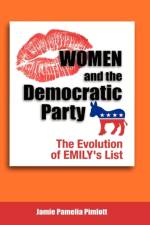von Jamie Pamelia Pimlott
116,00 €
Formed in 1985 as a political action committee (PAC) to provide select female Democratic candidates with seed money to run for federal office, today EMILY s List is much more than a women s PAC. Over the past twenty-five years, a political entrepreneur Ellen Malcolm, a cadre of liberal feminist activists, and thousands of liberal feminist women and men have transformed EMILY s List into a multi-pronged influence organization that has changed the face of U.S. Congress and the American political landscape. In 2008 EMILY s List brought in over $34 million from more than 10,000 large donors and an untold number of small donors; for the first time the Center for Responsive Politics placed EMILY s List on their list of heavy hitters. The president and founder of EMILY s List, Ellen Malcolm, is considered one of the top Democratic strategists in the country. But scholars, especially those outside of women and politics, continue to view EMILY s List as simply a women s PAC, albeit an important one. While acknowledging that it has been a force in making women competitive in the early stages of congressional campaigns and its bundling prowess, there has been little if any attempt to place EMILY s List within the broader literature of campaign finance or congressional elections. While bundling may have put ELIST on the map in the late 1980s, in 2008 bundling was but one tool in EMILY s List s arsenal. Over the past quarter of a century, EMILY s List transformed from a women s PAC/donor network to a multi-pronged influence organization that strategically uses its resources to aid pro-choice Democratic women in their quest for public office. EMILY s List has created and maximized on political opportunities in such a way that it now stands as a political powerhouse. Those who have underestimated it as a narrow women s organization, have also largely underestimated the important role EMILY s List played in helping transform the character of the Democratic Party in Congress and helping bring about the Party s dramatic resurgence to power. This study is the first examination of the growth and transformation of EMILY s List from its inception in 1985 through the 2008 election cycle. Relying on interviews with organization staff, founding members, and members of Congress, it illuminates the ways in which the organization s origin and mission are firmly rooted in the goals and activities of the liberal feminist women s movement of the 1970s. The successes and failures of this movement set the stage for the creation of EMILY s List. Using qualitative and quantitative data, the study traces the organization s evolution from its early days as a PAC to its transformation into a multi-pronged influence organization that is a PAC, but also functions as an interest group, a party adjunct, and a campaign organization. The book explores the membership of the organization over time, highlighting EMILY s List s efforts to pull in new members and retain its loyal base. The book also explores how the organization has overcome women s reticence to contribute and how that has helped it become so influential in the political sphere. The last part of the book examines the organization s influence vis- -vis the endorsement process, which highlights the organization s multi-pronged strategy. It ends with a discussion of the organization s endorsement of Hillary Rodham Clinton s presidential bid in 2008, and what the 2008 election meant for the future of EMILY s List. This book would be appropriate for a variety of courses including courses on women and politics, Congress and congressional elections, campaign and elections courses, parties and interest group courses, and campaign finance courses. This book will be accessible and appropriate for undergraduates and graduate students, as well as researchers and practitioners. It combines historical narrative, which makes it accessible to students, with original interviews and empirical analysis, which appeals to faculty wishing to introduce students to cutting edge research efforts in political science.

